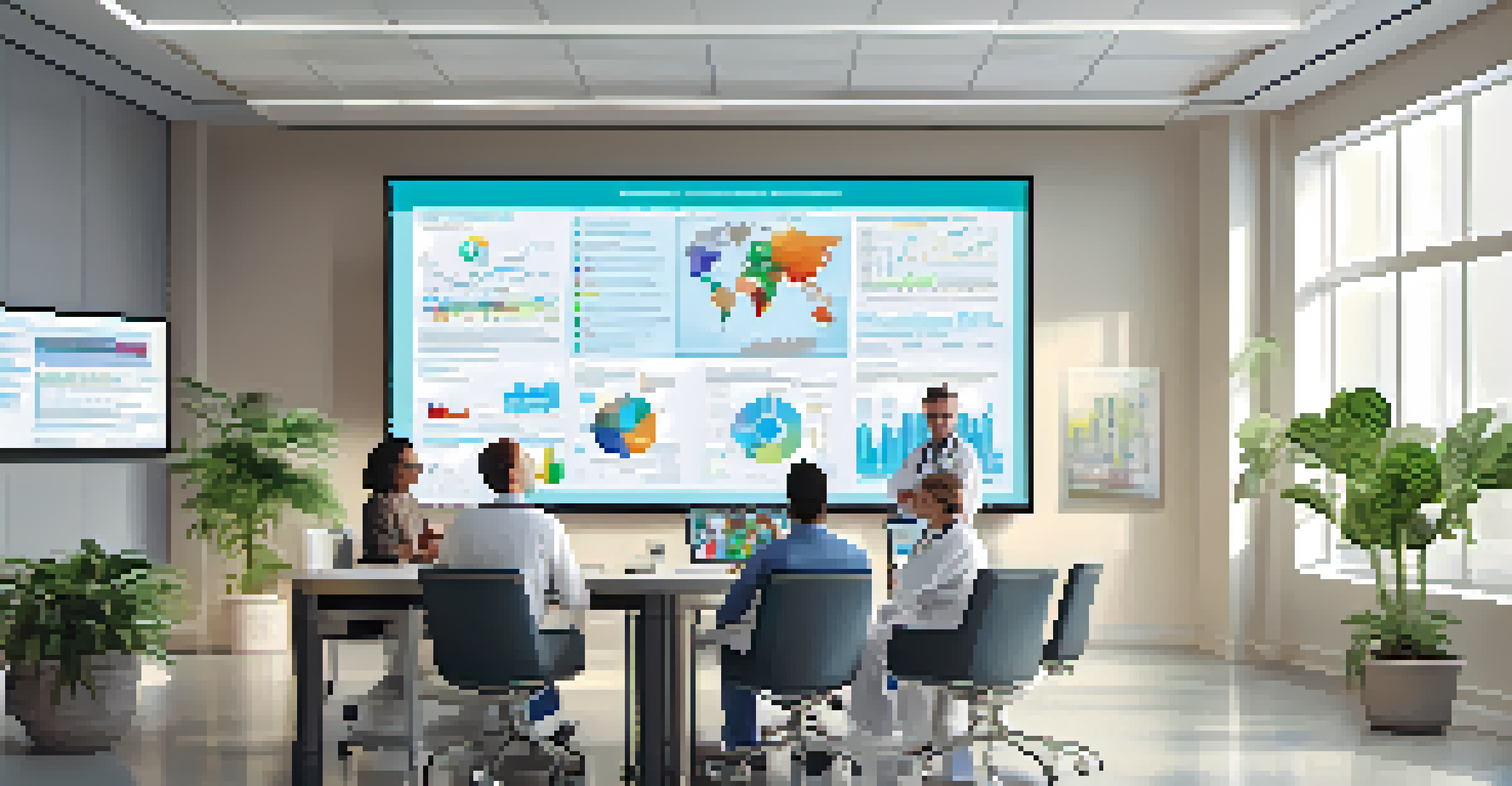Interoperability in Electronic Health Records Explained

What is Interoperability in Electronic Health Records?
Interoperability in electronic health records (EHRs) refers to the ability of different healthcare systems to communicate and share data seamlessly. This means that a patient's information can be accessed and understood across various platforms, regardless of the technology used. Imagine trying to solve a puzzle where the pieces come from different boxes; interoperability ensures that all the pieces fit together to create a complete picture of a patient's health.
Interoperability is a fundamental requirement for delivering high-quality healthcare.
There are three main types of interoperability: foundational, structural, and semantic. Foundational interoperability allows data to be exchanged without needing to understand the content. Structural interoperability deals with how data is organized, while semantic interoperability ensures that the data shared is meaningful and interpretable by different systems. Understanding these types helps clarify how EHRs can work together more effectively.
Ultimately, interoperability is crucial for improving patient care, reducing errors, and enhancing communication among healthcare providers. By allowing for a more holistic view of patient health, interoperability can lead to better treatment decisions and overall healthcare outcomes. It's like having access to a complete library instead of just a few scattered pages.
The Benefits of Interoperability in Healthcare
One of the most significant benefits of interoperability is improved patient safety. When healthcare providers can access accurate and up-to-date patient information, they can make better-informed decisions. For example, if a doctor can see a patient's allergy history, they can avoid prescribing medications that could trigger an adverse reaction, ultimately preventing potential harm.

Interoperability also streamlines workflows, reducing the time healthcare professionals spend on administrative tasks. Instead of manually entering data into multiple systems, providers can share information quickly and easily, allowing them to focus more on patient care. This efficiency is akin to having a well-organized toolbox, where every tool is easily accessible when needed.
Interoperability Enhances Patient Care
Seamless data sharing among healthcare systems improves patient safety and treatment decisions.
Furthermore, interoperability enhances care coordination among different specialists and providers. When multiple healthcare professionals are involved in a patient's treatment, having a shared system allows for better collaboration. Think of it as a team sport where everyone is on the same page, working together toward a common goal: the patient's health.
Challenges to Achieving Interoperability
Despite the many benefits, achieving interoperability in EHRs is fraught with challenges. One major hurdle is the lack of standardized data formats across different systems. Just like trying to understand messages written in various languages without a translator, inconsistent data formats can lead to misunderstandings and errors.
The future of healthcare depends on our ability to share information seamlessly.
Another challenge is the resistance from some healthcare organizations to share data due to concerns over privacy and security. While it's essential to protect patient information, overly strict policies can hinder collaboration and data sharing. This situation is a balancing act, much like trying to keep a seesaw level: too much weight on one side can tip the entire system.
Lastly, financial constraints can also impede the adoption of interoperable systems. The costs associated with implementing new technologies can be daunting for some organizations, especially smaller practices. However, the long-term savings and improved patient outcomes often outweigh the initial investments, making it a worthy consideration.
The Role of Standards in Interoperability
Standards play a crucial role in achieving interoperability among EHR systems. Organizations like Health Level Seven International (HL7) and the Fast Healthcare Interoperability Resources (FHIR) framework provide guidelines and protocols that help ensure systems can communicate effectively. Imagine these standards as the rules of a game; when everyone follows the same rules, the game runs smoothly.
By adhering to established standards, healthcare organizations can improve the quality and consistency of the data exchanged between systems. This not only facilitates better patient care but also fosters trust among providers. When everyone knows the rules, collaboration becomes easier and more efficient.
Challenges Hinder Data Sharing
Lack of standardized formats and privacy concerns create barriers to achieving full interoperability.
Moreover, ongoing efforts to develop and refine these standards are essential for keeping pace with technological advancements. As healthcare continues to evolve, so too must the standards that govern interoperability. This adaptability is crucial for ensuring that EHR systems remain relevant and effective in a rapidly changing landscape.
Real-World Examples of Interoperability Success
Several healthcare organizations have successfully implemented interoperable systems, showcasing the potential benefits of this approach. One notable example is the Veterans Health Administration (VHA), which has established a comprehensive health information exchange that allows different facilities to share patient data securely. This initiative has led to improved care coordination and better health outcomes for veterans across the country.
Another example comes from the use of the CommonWell Health Alliance, a nonprofit organization that facilitates interoperability among various EHR vendors. By enabling healthcare providers to access patient information across different platforms seamlessly, CommonWell has demonstrated how collaboration can enhance patient care. It's similar to a well-connected community where everyone works together for a common purpose.
These success stories highlight the tangible benefits of interoperability, inspiring other organizations to pursue similar initiatives. As more healthcare providers recognize the value of sharing information, the landscape of patient care continues to evolve for the better.
Future Trends in Interoperability
Looking ahead, several trends are emerging that could shape the future of interoperability in EHRs. One significant trend is the increasing use of artificial intelligence (AI) and machine learning to analyze and interpret health data. These technologies can help identify patterns and insights that may not be immediately apparent, enhancing decision-making for healthcare providers.
Telehealth is another trend that is likely to influence interoperability. As more patients seek remote care, ensuring that EHR systems can communicate effectively with telehealth platforms will be essential for providing comprehensive patient care. This integration is akin to building bridges between islands, connecting various aspects of healthcare.
Future Trends Shape Healthcare Tech
Emerging technologies like AI and telehealth are set to improve interoperability and empower patients.
Lastly, patient empowerment is becoming a critical aspect of interoperability. As patients take a more active role in managing their health, having access to their own data becomes increasingly important. Tools that allow patients to view and share their health information can facilitate conversations with providers, leading to more personalized care.
Conclusion: The Path Forward for Interoperability
In conclusion, interoperability in electronic health records is vital for enhancing patient care and improving healthcare outcomes. While challenges remain, the benefits of seamless data sharing are undeniable. As more organizations recognize the importance of interoperability, we can expect to see continued advancements in technology and collaboration.
The journey toward interoperability requires commitment from healthcare providers, technology vendors, and policymakers alike. By working together to create standardized systems and address barriers, the healthcare industry can move closer to achieving true interoperability. It's a collective effort, much like a relay race where each participant plays a crucial role in reaching the finish line.

As we look to the future, the ongoing dialogue around interoperability will be essential in shaping a healthcare landscape that prioritizes patient safety, efficiency, and collaboration. Together, we can pave the way for a more connected and responsive healthcare system that ultimately benefits everyone.